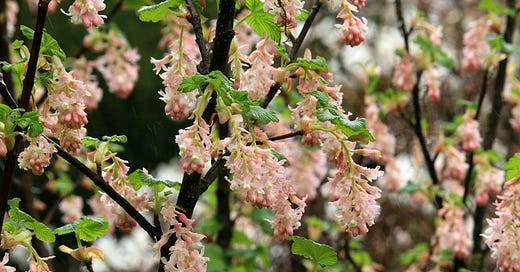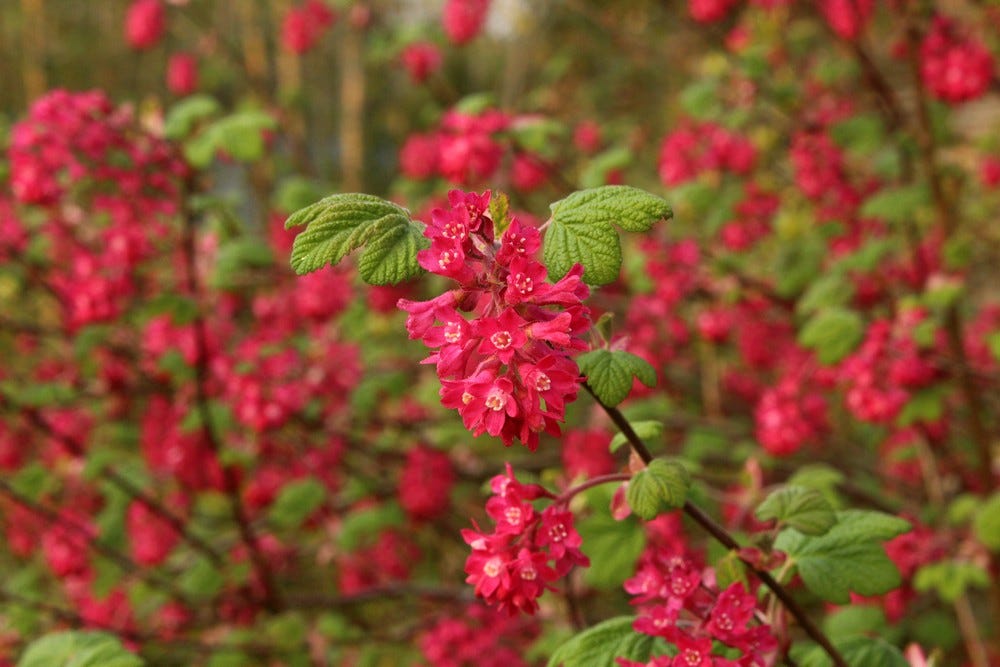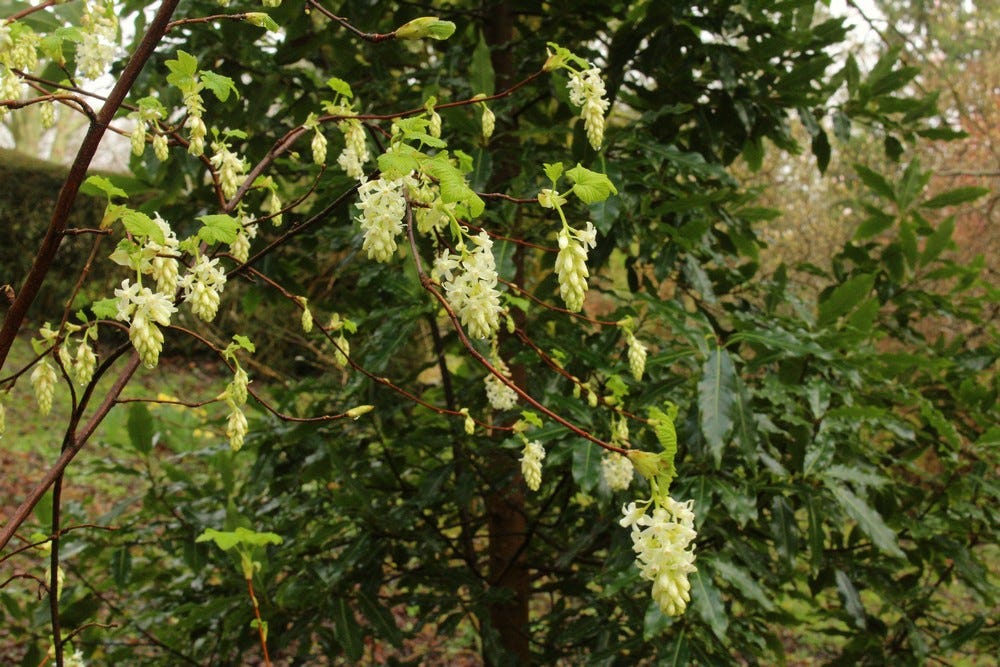I learnt early on that I would never be able to grow everything I wanted. This is partly down to finances, but mainly down to time and space. Learning to console myself with enjoying plants in other gardens was a great thing for me; I photograph and observe plants everywhere. It's a great way to live my life.
Some gardeners are happy to grow a few things and leave it at that, while others are driven by a hunger for new plants. I understand it; I have far too many plants myself and should re-home some elsewhere, but my collection seems to be growing in every respect. A curious side-effect of this collecting is that while some plants are embraced others are ignored.
Old favourites like forsythia, spiraea, Berberis thunbergii and so on have satisfied the needs of gardeners for many decades, but have now become sidelined in favour of other things. Another old favourite is the flowering currant, Ribes sanguineum, the focus of today's Plant Files.
I don't understand why so many gardeners, particularly those professing to great wisdom, turn their noses at Ribes sanguineum. It's a jolly plant, whose flowers hang from bare branches in late winter like little bunches of grapes. This is also a tough and reliable plant; it takes a lot to bother a ribes!
The classic of the species is a nice mid pink, with flowers borne in great profusion in decently large clusters. There's a certain 'old cottage charm' to it, although I suspect this is just how it's perceived. That said, I drove past an old thatched cottage in Devon recently with a magnificent specimen in the front garden; sadly I was driving and couldn't stop to take a picture.
Maybe that classic old pink isn't what you want, so the bright beetroot pink Ribes 'Pulborough Scarlet' or a redder (or at least deep beetroot pink) alternative like Ribes 'Red Bros' or 'Red Pimpernel' might suit you more. These need, or at least warrant, a lighter part of the garden so you can actually see the flowers. In too much shade the dark flowers are lost to the dark background, but that's not to say that you won't enjoy them close at hand.
If I was to recommend one single form of Ribes sanguineum above all others then it would be the white 'Elkington's White' or 'White Icicle'. These aren't two names for the same plant, but instead two names for two separate but meaningfully identical plants raised separately by two different raisers. This is rare in plants but was always going to happen at some point; sooner or later breeders were going to coincidentally raise identical plants. We could talk about Geranium 'Rozanne' and 'Jolly Bee' here but I don't want to get sued.
Both white forms of Ribes sanguineum are fine garden plants for a sunny location, but in light to moderate shade they are nothing short of superlative. Their clusters of white flowers stand out against the dark very well and add a gentle charm to the carpets of hellebores and other spring flowers we enjoy as winter starts to give way to spring. I tend to find Ribes 'White Icicle' is a little more expensive for some reason- it might have a patent on it, or something like that- so if you're wanting several plants you might find Ribes 'Elkington's White' a bit cheaper.
Occasionally you see Ribes ‘Poky’s Pink’ for sale; this is a useful plant whose light rosy-pink flowers give the gardener an alternative to the strong reds and pinks but also the clear whites.
Ribes sanguineum is about as easy going as plants get in the UK. It's perfectly hardy, will tolerate pretty much any soil conditions except extremely wet or extremely dry, and tolerates a degree of neglect too. The more modern varieties are being bred to be floriferous on very compact plants; personally I think there's a great benefit to the more open habit of the older varieties myself, as that little bit of space between the clusters of flowers allows them to be admired more closely. That's probably more down to taste than necessity.
Ribes sanguineum flowers on last year's wood, so pruning it after flowering will usually deliver a good display on a smaller plant. However in a larger garden it pays to let the plant grow to around its 2m or 6ft height, pruning a few bits hard every couple of years just to remind the plant who's in charge.
Pests and diseases give this shrub a wide berth, usually. I suspect the smell of the leaves and flowers, when touched, puts most things off. This is a plant famed for its classic eau de tomcat aroma which some gardeners do find unpleasant. It's not the nicest smell by any means but as long as you're not touching it, or brushing against it, too much it's not really a big deal. I guess I wouldn't plant it close to a path... unless you wanted to put off garden visitors?!








I love this plant! My neighbours have it as part of their border with my garden - last year I managed to stop their hedge cutter man chopping them in November on my side and I’ve been rewarded with gorgeous stems! They’ve also self seeded in my garden to my delight and one of them is absolutely thriving underneath a Leylandii. Seriously how could you not love it? I suspect it may have fallen out of favour due to how it is often treated - short back and sides from a hedge trimmer in the autumn does not do it justice at all.
I could take or leave the standard ribes but I adore ‘white icicle’ and now I really like that dark red one you’ve shown us, too, thank you. Do you think there are any really good forsythias? I don’t generally like the shade of yellow…